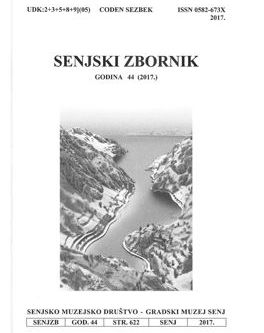Velebit i zaštita prirode
Velebit and the protection of nature
Author(s): Zoran Šikić, Denis Gurlica, Tomislav ŠarićSubject(s): Human Geography, Regional Geography, Environmental Geography, Applied Geography
Published by: Senjsko muzejsko društvo i Gradski muzej Senj
Keywords: Velebit; protected regions; biodiversity; sustainable development;
Summary/Abstract: Velebit is a cult and mythical Croatian mountain, "a holy mountain", a symbol of national identity. Velebit is also the feather in the cap of Croatian protected areas of nature, a UNESCO biosphere reserve since 1978, a nature park since 1981, one part of it has been within the Paklenica National Park since 1949, and it has also been part of the Northern Velebit National Park since1999. In its entirety, it is part of the EU Natura 2000 ecological network which clearly points to its global significance. In good weather, it can be seen entirely from the air at a height of 8,000m and it has the shape of a dyke, which in a curve, bulges out into the sea. The littoral slope is higher and it rises from the sea to a height of 700 m to the lowest pass, then up to 1,757 m to the highest peak. From the northern land side the slope rises from 150 m to 1,150 m above the Lika plateau which lies at 500 – 600 m above sea level. Velebit is a centre of biodiversity and is the most significant endemic hub of flora and fauna in the Republic of Croatia. According to the last edition of the United Nations List of Protected Areas from 2003 there are 102,102 protected areas in the world with a total area of protection of 11.5% of the land and 0.5% of the surface ofthe sea. In the Republic of Croatia, according to the Protected Areas Register of the Ministry of Environment Protection and Nature as of 9th September 2015, there are a total of 408 areas which encompass 8.56% of the total surface area of the Republic of Croatia, in other words 12.23% ofthe land territory and 1.94% of the territorial sea which is above the global average. The largest part of the protected area is in the category of nature parks which accounts for 4.56% of the total surface area of the Republic of Croatia, and the largest contribution to that is in fact Velebit. The current law about the protection of nature sets out nine categories of protected regions, which to a greater extent correspond to one of the internationally recognised categories of protected regions IUCN – the International Union for the Conservation of Nature. The wider region of Paklenica,with the surface area of 9,500 ha was, due to its natural foundations, geomorphological forms and preserved forests, declared amongst the first national parks, the same year as Plitvice Lakes. In the34Z. Šikić et al.: Velebit i zaštita prirode Senj. zb. 44, 17-34 (2017.)northern part of Velebit, with a surface area of 10,900 ha, the Northern Velebit National Park was declared in 1999, recognisable by its biodiversity and primaeval wilderness. In the vision of the Northern Velebit National Park this is distinguished as the fulcrum of the sustainable development of the local community based on tradition as well as a place of acquiring new knowledge. In addition to the two national parks the remaining part of Velebit, with an area of 200,000 ha, is protected as a nature park. All of this points to Velebit’s exceptionally high contribution to the protection of nature. Whether in any way the protection of nature is a contribution to the survival and sustainable development of the Velebit region and in particular the local communities of this area is still a current issue, and likewise, whether it is possible in this area to link the general and global challenges of the present day with those of the local.
Journal: Senjski zbornik - prilozi za geografiju, etnologiju, gospodarstvo, povijest i kulturu
- Issue Year: 44/2017
- Issue No: 1
- Page Range: 17-34
- Page Count: 18
- Language: Croatian

